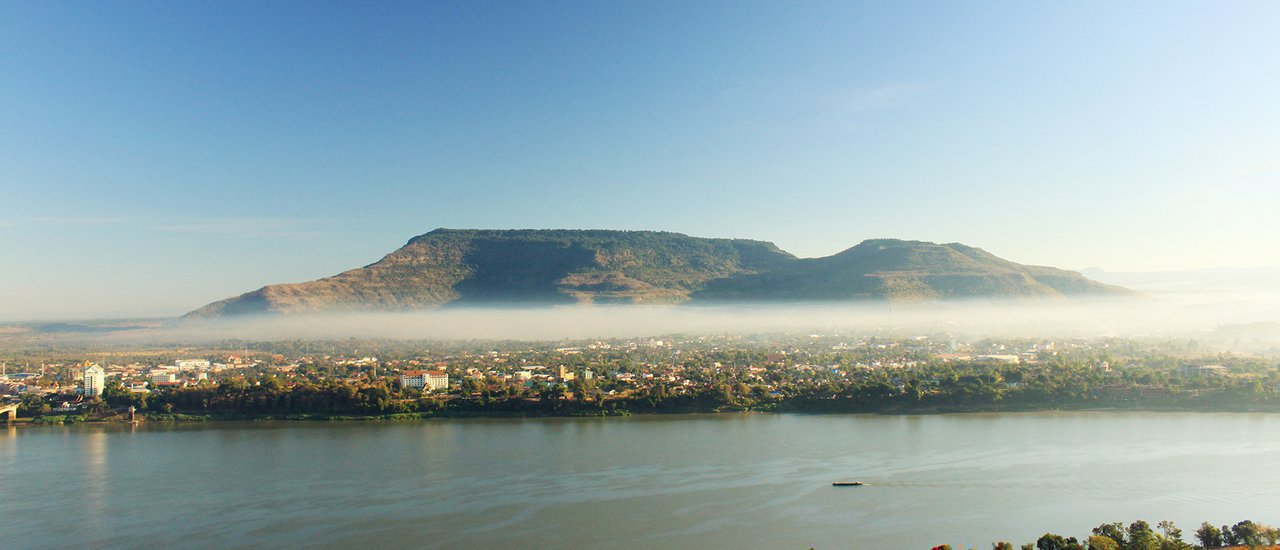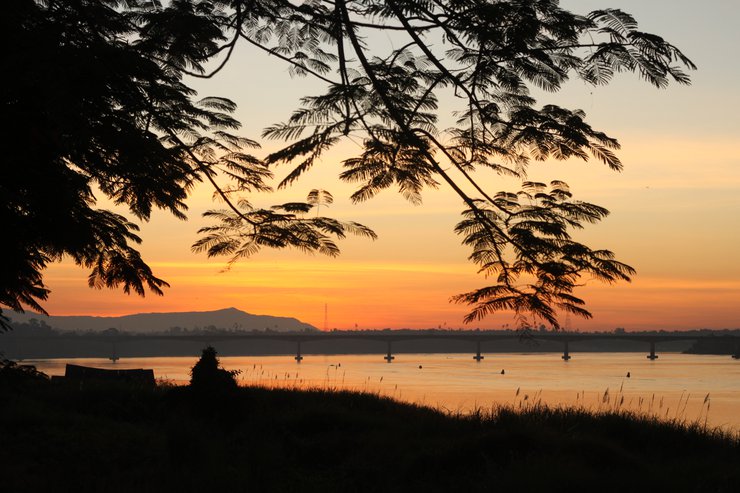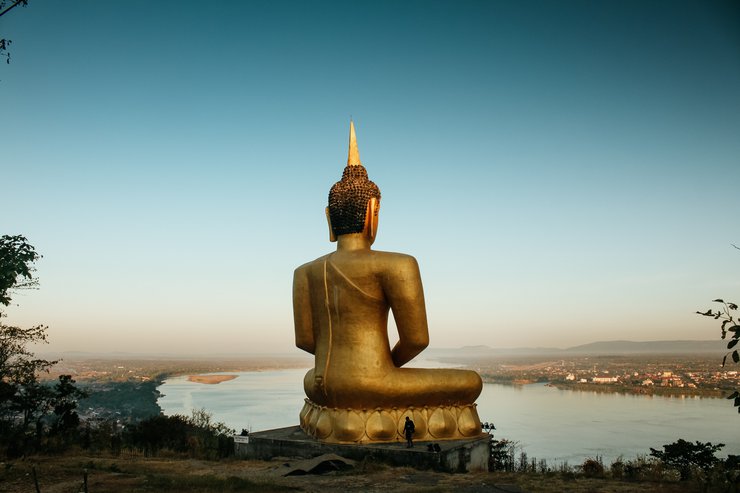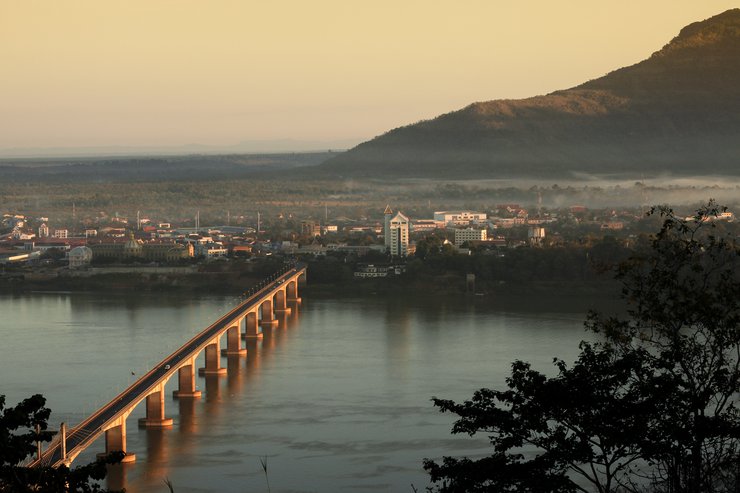**"Pakse"** We've heard this name for a long time, it's right near our home. Until one day we had the opportunity to travel there and meet it in person.
During the winter season at the end of last year, December, and with the new year calendar just a few days away, we returned home to Pibool District, Ubon Ratchathani Province. And we thought of this place on the way. It was the perfect time to stop by and get to know "Pakse".

Lao-Japan Friendship Bridge
**"Pakse"** is the capital of Champasak Province in southern Laos. It serves as a gateway to southern Laos, welcoming travelers and providing them with everything they need before venturing out to explore the various attractions of Champasak Province. The province boasts numerous renowned tourist destinations, including forests, waterfalls, cultural sites, and the UNESCO World Heritage Site of Wat Phou, an ancient Khmer temple complex.
Traveling to Pakse is not difficult at all. Nowadays, it is very convenient. There are international buses that can take you directly from Bangkok. But we started from our home, Pibool Mangsahasri district, a district in Ubon Ratchathani province. We took a van from the district to the Thai-Lao border "Chong Mek". With a passport, you can easily pass through. But if you don't have one, you can get a temporary border pass, but you can only stay in Laos for no more than 3 days.

"The Laos-Japan Friendship Bridge as seen from the banks of the Mekong River in Pakse"
"Good morning Pakse"
No matter where we go, one thing we don't want to miss is waking up to watch the first light of the day. From Pakse city, we rode our motorbike across the Laos-Japan Friendship Bridge. Our destination was "Wat Phou Salao" on a small hill opposite Pakse city. From the top, we could see a view of Pakse city and the mouth of the Se Don River, which meets the Mekong River in front of us. Behind us were mountains and lush forests.

To reach the Phou Salao Temple, we can either walk or drive up. We chose to walk, and just seeing the stairs made us realize how tiring it would be. From the concrete stairs, we continued on wooden stairs, and eventually came across a large, radiant yellow Buddha statue facing Pakse city. Although we were tired from climbing the stairs, the view made us forget all about it.

"Phu Sa Lao Temple"

We stopped at a pavilion with a view inside the temple, sitting and waiting for a while. After a while, the fog slowly floated in. In just a few minutes, the fog started to get thicker. We could only watch silently, thinking to ourselves that today was a lucky day. We only stayed in Pakse for one night, but we had the chance to see it. It was a gift from nature, a gift from Pakse to us and my two younger brothers. We could only look at it and smile to ourselves, because soon it would become a memory.





The atmosphere on Wat Phu Salao


There are beautiful rows of Buddha statues.

The large Buddha statue on the Pakse side


"Pakse City, a view from Phou Salao Temple"

"Channel Mek Border Crossing"
Traveling to Pakse, Laos is very convenient.
- From Mo Chit Bus Terminal, there are international buses that run directly to Pakse. The buses are operated by the Transport Co., Ltd. (BKS) and are very convenient. The buses run from Bangkok to Ubon Ratchathani and then to the Chong Mek border crossing.
- Alternatively, you can choose to board a bus at the Ubon Ratchathani Bus Terminal. There are both vans and buses that run from Ubon to Chong Mek. Once you reach the Chong Mek border crossing, you can cross the border and there will be a bus station that will take you to Pakse.
- If you have a passport, you can cross the border without a visa. For those who do not have a passport, you can obtain a temporary border pass at the Chong Mek border crossing. The office where you can obtain the pass is located before you reach the border crossing. However, it is recommended that you obtain a passport as it will be much more convenient.
๋Journey_Max
Friday, September 27, 2024 10:05 AM













![Cover [The Valley of the Blue Moon] The Blue Moon Valley of Shangri-La...](https://asset.readme.me/files/48987/thumb.cover.jpg?v=51ae4daf)


